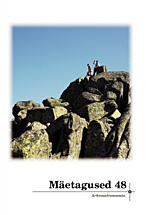Kuidas me mõistame ööpäeva
How Do We Understand the Twenty-four Hour Period
Author(s): Asta ÕimSubject(s): Anthropology
Published by: Eesti Kirjandusmuuseum
Keywords: day and night; lexicon; phraseology; real and naive worldview; semantics of images
Summary/Abstract: The article focuses on the notion ööpäev (‘twenty-four hours, day and night’) and the subdivisions of the term in the Estonian language. Attempt is made to ascertain how Estonians render meaning to ööpäev and what are the content-wide considerations for periodising the ööpäev and päev (‘day’), and whether the reasons for periodisation in different languages are similar or not. In the Estonian language, the period of daylight is understood as work-time. Proceeding from this standpoint, hommik (‘morning’) as a productive section of the day is segmented in a detailed manner and time-wise lasts until lunch. The evening (õhtu), on the contrary, is understood, besides time-wise notion, as the finishing of work and transfer to the rest period from any time since lunch (kell kaks jäädi juba õhtule (‘they called it a day already at two o’clock’); õhtule saadi alles loojangu eel (‘they finished work only before sunset’).
Journal: Mäetagused. Hüperajakiri
- Issue Year: 2011
- Issue No: 48
- Page Range: 95-110
- Page Count: 16
- Language: Estonian

